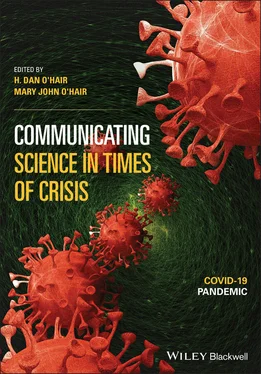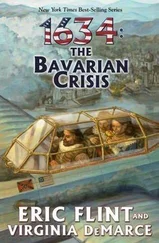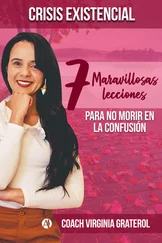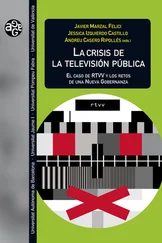127 Limperos, A. M., & Silberman, W. (2019). Agenda setting in the age of emergent online media and social networks: Exploring the dangers of a news agenda influenced by subversive and fake information. In E. Downs (Ed.), Dark side of media & technology (pp. 37–48). Peter Lang.
128 Lin, L., Savoia, E., Agboola, F., & Viswanath, K. (2014). What have we learned about communication inequalities during the H1N1 pandemic: A systematic review of the literature. BMC Public Health, 14(1), 535–558. https://doi.org/10.1186/1471-2458-14-484
129 Lobato, E., Mendoza, J., Sims, V., & Chin, M. (2014). Examining the relationship between conspiracy theories, paranormal beliefs, and pseudoscience acceptance among a university population. Applied Cognitive Psychology, 28(5), 617–625. https://doi.org/10.1002/acp.3042
130 Lukito, J., Suk, J., Zhang, Y., Doroshenko, L., Kim, S. J., Su, M.-H., Xia, Y., Freelon, D., & Wells, C. (2020). The wolves in sheep’s clothing: How Russia’s internet research agency tweets appeared in U.S. news as vox populi. International Journal of Press/Politics, 25(2), 196–216. https://doi.org/10.1177/1940161219895215
131 Madisson, M.-L. (2014). The semiotic logic of signification of conspiracy theories. Semiotica, 2014 (202), 273–300. https://doi.org/10.1515/sem-2014-0059
132 Magarey, R. D., & Trexler, C. M. (2020). Information: A missing component in understanding and mitigating social epidemics. Humanities & Social Sciences Communications, 7(128), 1–12. https://doi.org/10.1057/s41599-020-00620-w
133 Mahmoud, H. (2020). A model for the spreading of fake news. Journal of Applied Probability, 57(1), 332-342. https://doi.org/10.1017/jpr.2019.103
134 Malena-Chan, R. (2019). A narrative model for exploring climate change engagement among young community leaders. Health Promotion and Chronic Disease Prevention in Canada: Research, Policy and Practice, 39(4), 157–166. https://doi.org/10.24095/hpcdp.39.4.07
135 McKenzie-McHarg, A. (2020). Conceptual history and conspiracy theory. In M. Butter & P. Knight (Eds.), Routledge handbook of conspiracy theories (pp. 16–27). Routledge.
136 McManus, S., D’Ardenne, J., & Wessely, S. (2020). Covid conspiracies: Misleading evidence can be more damaging than no evidence at all. Psychological Medicine, 1-2. Online first. https://doi.org/10.1017/S0033291720002184
137 Mercier, H., Majima, Y., & Miton, H. (2018). Willingness to transmit and the spread of pseudoscientific beliefs. Applied Cognitive Psychology, 32(4), 499–505. https://doi.org/10.1002/acp.3413
138 Mitchell, A., & Oliphant, J. B., Pew (2020, March 18). Americans immersed in COVID-19 news. Pew Research Center.
139 Moulding, R., Nix-Carnell, S., Schnabel, A., Nedeljkovic, M., Burnside, E. E., Lentini, A. F., & Mehzabin, N. (2016, August). Better the devil you know than a world you don’t? Intolerance of uncertainty and worldview explanations for belief in conspiracy theories. Personality and Individual Differences, 98, 345–354. https://doi.org/10.1016/j.paid.2016.04.060
140 Nawrat, A. (2020, February 26). Covid-19 outbreak: How misinformation could fuel global panic. Pharmaceutical Technology. https://www.pharmaceutical-technology.com/features/covid-19-outbreak-how-misinformation-could-spark-global-panic
141 Nguyen, H. (2020, March 2). Americans are taking action in response to coronavirus. YouGov. https://today.yougov.com/topics/health/articles-reports/2020/03/02/americans-are-taking-action-response-coronavirus
142 Nimmo, B., François, C., Eib, C. S., Ronzaud, L., Ferreira, R., Hernon, C., & Kostelancik, T. (2020, June 17). Secondary infection. Graphika. https://mediawell.ssrc.org/2020/06/18/secondary-infektion-at-a-glance
143 O’Hair, H. D., & Cody, M. J. (1994). Deception. In W. R. Cupach & B. H. Spitzberg (Eds.), The dark side of interpersonal communication (pp. 181–213). Lawrence Erlbaum Associates.
144 O’Sullivan, P. B., & Carr, C. T. (2018). Masspersonal communication: A model bridging the mass-interpersonal divide. New Media and Society, 20(3), 1161–1180. https://doi.org/10.1177/1461444816686104
145 Oliver, J. E., & Wood, T. (2014). Conspiracy theories and mass opinion. American Journal of Political Science, 58(4), 952–966. https://doi.org/10.1111/ajps.12084
146 Orso, D., Federici, N., Copetti, R., Vetrugno, L., & Bove, T. (2020). Infodemic and the spread of fake news in the COVID-19-era. European Journal of Emergency Medicine, 27(5), 327-328. https://doi.org/10.1097/MEJ.0000000000000713
147 Oxford University Press. (n.d.). Word of the year. Author. https://languages.oup.com/word-of-the-year
148 Oyeyemi, S. O., Gabarron, E., & Wynn, R. (2014, October). Ebola, Twitter, and misinformation: A dangerous combination? British Medical Journal, 349, g6178. https://doi.org/10.1136/bmj.g6178
149 Patev, A. J., Hood, K. B., Speed, K. J., Cartwright, P. M., & Kinman, B. A. (2019). HIV conspiracy theory beliefs mediates the connection between HIV testing attitudes and HIV prevention self-efficacy. Journal of American College Health, 67(7), 661–673. https://doi.org/10.1080/07448481.2018.1500472
150 Pawlick, J., Colbert, E., & Zhu, Q. (2019). A game-theoretic taxonomy and survey of defensive deception for cybersecurity and privacy. ACM Computing Surveys, 52(4), 1–28. https://doi.org/10.1145/3337772
151 Pearson, G. (2020). Sources on social media: Information context collapse and volume of content as predictors of source blindness. New Media & Society. Online first. https://doi.org/10.1177/1461444820910505
152 Pennycook, G., Cannon, T. D., & Rand, D. G. (2018). Prior exposure increases perceived accuracy of fake news. Journal of Experimental Psychology: General, 147(12), 1865–1880. https://doi.org/10.1037/xge0000465.supp
153 Pentland, B. T. (1999). Building process theory with narrative: From description to explanation. Academy of Management Review, 24(4), 711–724. https://doi.org/10.5465/AMR.1999.2553249
154 Peterson, H. L. (2018). Political information has bright colors: Narrative attention theory. Policy Studies Journal, 46(4), 828–842. https://doi.org/10.1111/psj.12272
155 Pigden, C. (1995). Popper revisited, or what is wrong with conspiracy theories? Philosophy of the Social Sciences, 25(1), 3. https://doi.org/10.1177/004839319502500101
156 Pomerantsev, P., & Weiss, M. (2014). The menace of unreality: How the Kremlin weaponizes information, culture and money. Institute of Modern Russia.
157 Popper, K. (1980). Science: Conjectures and refutations. In E. D. Klemke, R. Hollinger, & A. D. Kline (Eds.), Introductory readings in the philosophy of science (pp. 19–34). Prometheus.
158 Porter, C. M. (2014). The Black Death and persecution of the Jews. Saber and Scroll, 3(1), 55–65. https://saberandscroll.weebly.com/uploads/1/1/7/9/11798495/3.1._a4.pdf
159 Porter, S., Bellhouse, S., McDougall, A., ten Brinke, L., & Wilson, K. (2010). A prospective investigation of the vulnerability of memory for positive and negative emotional scenes to the misinformation effect. Canadian Journal of Behavioural Science, 42(1), 55–61. https://doi.org/10.1037/a0016652
160 Quinn, S. C., Hilyard, K. M., Jamison, A. M., An, J., Hancock, G. R., Musa, D., & Freimuth, V. S. (2017). The influence of social norms on flu vaccination among African American and White adults. Health Education Research, 32(6), 473–486. https://doi.org/10.1093/her/cyx070
161 Raab, M. H., Auer, N., Ortlieb, S. A., & Carbon, -C.-C. (2013, July). The Sarrazin effect: The presence of absurd statements in conspiracy theories makes canonical information less plausible. Frontiers in Psychology, 4, 453. https://doi.org/10.3389/fpsyg.2013.00453
162 Raderstorf, B., & Camilleri, M. J. (2019, June). Online disinformation in the United States: Implications for Latin America. Peter D. Bell Rule of Law Program, Inter-American Dialogue.
Читать дальше












